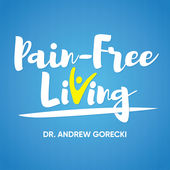
By Andrew Gorecki, Physical Therapist
So as a physical therapist I hear on a daily basis about people’s sciatica pain. They have either been diagnosed, googled, webmd searched, etc and have determined that they in fact have Sciatica. I would argue that this means nothing, it is simply a way to put yourself in a category. Let me describe in more detail. The Sciatica nerve is a collection of 5 nerves that come together and form one big nerve the size of your thumb that moves down the back of your thigh to your toes.
Symptoms of Sciatica can be pain traveling down the leg, numbness and tingling, and weakness in the leg. This however does not tell you where the problem is. In order to have sciatica we must have either inflammation of the nerve somewhere or compression of the nerve somewhere. This can be where the nerve comes out of the spine or anywhere along its path. Here are the top 3 reasons why someone has sciatica:
- Disc herniation - a protruded disc that is pressing on one of the 5 nerves that combine to create the sciatic nerve
- Stenosis or Degenerative Disc Disease- This is a narrowing of the hole that the one of the 5 nerves comes out of. This is usually in people over the age of 55
- Piriformis syndrome- a muscle in the back of the hip that can compress the sciatic nerve after it leaves the spine. More of a muscle tightness problem.
Now that we have named the top 3 types of lower back pain that can cause sciatic pain it is also important to note that we haven’t even talked about what causes these three types of sciatic pain. We will cover that in future blog posts. If you want to try some movements that might help with your sciatica pain click on the box for our very effective top 3 exercises for sciatica.
Yours in Health
Andrew Gorecki




